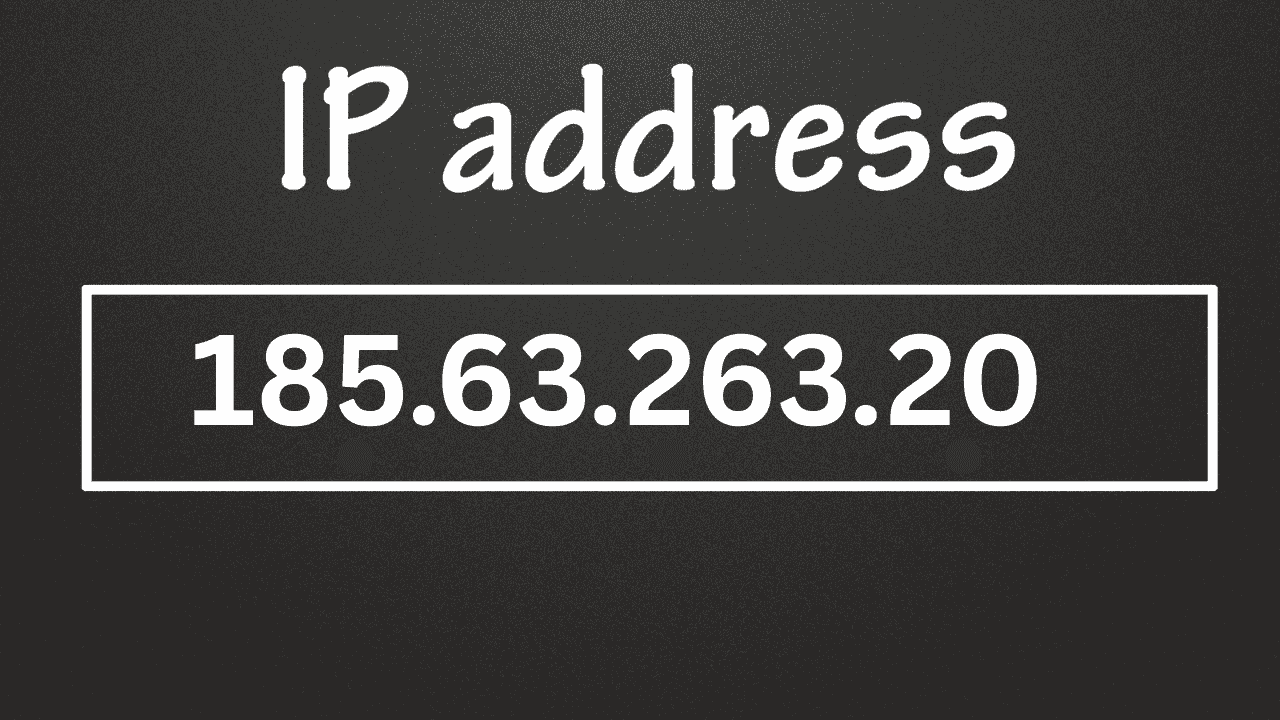Introduction
One would likely consider the IP address 185.63.263.20 as an ordinary internet address if they encountered it. When observed quickly the address maintains an appearance typical of IPv4 configuration. The main issue arises because this address fails to qualify as a legitimate IP address. The invalid IP address 185.63.263.20 emerges in network tools and server logs as well as code examples despite its non-existent nature.
This article breaks it down in simple terms. You’ll learn what IP addresses are, why this one isn’t real, and what it could mean if you see it pop up.
What Is an IP Address?
Devices that connect to networks obtain their number-based identification through Internet Protocol (IP) addresses and these are known as IP addresses (abbr. Internet Protocol addresses). From this IP address systems can obtain information needed for successful inter-network communication. The process of loading a website requires your device to transmit requests through the system to the IP address where the site resides.
There are two common types of IP addresses:
- IPv4: Looks like four numbers separated by dots (e.g., 192.168.1.1). Each number can be from 0 to 255.
- IPv6: A newer format using longer strings and colons (e.g., 2001:0db8:85a3::8a2e:0370:7334).
The IP in question, 185.63.263.20, looks like an IPv4 address. But there’s a problem.
Why 185.63.263.20 Is Invalid
The four-number sections comprising an IP address are known as octets. IP addresses require each number to exist within the range from 0 to 255. The third number in 185.63.263.20 breaches the standard IP address octet range values.
The improper IP address structure becomes broken due to this change. Trying to use this type of IP address for server or device connection will lead to failures. The IP address 185.63.263.20 leads to no accessible location when you attempt browsing or networking with it.
How Do Invalid IPs Get Used?
You might wonder why anyone would use an IP that doesn’t work. The truth is, invalid IPs like this can appear in several different situations — and not all of them are mistakes.
Types and Misconfigurations
The origin of invalid IP address 185.63.263.20 stems mostly from user mistakes. An intended valid IP address can become invalid when someone accidentally types or mispresses keys in the address. Network configuration files become nonfunctional the when simple typing errors such as 185.63.263.20 occur.
Placeholders in Technical Examples
IT professionals write down nonexistent IP addresses during the creation of technical documentation and code documentation while also using them in training instruction materials. These are dummy IP addresses which do not lead to operational servers. Real system connections are blocked off due to this prevention measure.
Used for Obfuscation
Programming professionals integrate these placeholder IP addresses into scripts and tools and logs in order to obscure original IP addresses. The use of fake IP addresses serves to defend user information and stop unnecessary traffic from reaching actual servers in addition to safeguarding sensitive information during exhibitions.
Seen in Suspicious Traffic
Acknowledgment of fake IP occurrences occurs in spam messages and phishing along with malicious code activities. Attacker implementations of invalid IP addresses attract security analysts’ examination because they understand that automated monitoring tools might pursue these useless directions.
Regular occurrences of fake IP addresses in log files and connection attempts need additional investigation because they often signal security anomalies.
Confusion in Server Logs
While examining website or application or firewall log files you will commonly come across 185.63.263.20. Any device attempting to connect with the system ends up recorded in logs regardless of its genuineness so the data contains fake and valid attempts. The recording system may capture bot-generated requests even if the source IP used is invalid and therefore makes no sense.
In particular cases an improperly formatted address may indicate system malfunction or incorrect network traffic. In both cases investigation of repeated peculiar events proves beneficial for network monitoring.
Reserved IPs vs. Fake IPs
There’s a difference between IPs that are intentionally set aside for documentation and ones that are just broken. For example, these addresses are officially reserved for testing and training:
- 192.0.2.0/24
- 198.51.100.0/24
- 203.0.113.0/24
They look real and follow the IPv4 format, but they won’t affect the internet if you use them in tutorials or experiments. On the other hand, 185.63.263.20 isn’t reserved — it’s simply outside the valid range.
Could 185.63.263.20 Be IPv6?
Two different address structures exist between IPv6 addresses and their counterpart. The addresses extend much longer while using hexadecimal characters among numbers and letters which need colons for separation. The IP address format 185.63.263.20 does not conform to either IPv4 or IPv6 structure making it neither.
What Happens If You Try to Visit It?
Placing 185.63.263.20 in your web browser will trigger an error message. Since there is no actual server located at that address the web browser will fail to establish a connection. The browser disables access to malformed IP addresses before you can do so.
The networking tools will encounter ping or trace failures due to this IP’s issues.
Is There Any Security Risk?

An independent use of this IP address poses no security threat. The IP address remains non-responsive to any device allowing no possible connection. Security risks may exist when this IP appears within regularly repeated connection patterns or during traffic inspections or script-based evaluations. The analysis of specific patterns that contain this IP requires an examination of surrounding circumstances.
Where did you see this IP? At what point in time was this observation taking place? Your logs contain additional irregularities throughout the network data.
When to Take Action
If you’re an IT admin or security analyst and this IP shows up:
- Look at the source. Did it come from user input, an automated script, or external traffic?
- Check how often it appears. One typo is normal. Dozens in a short time might suggest scanning or probing.
- Review your firewall and IDS (Intrusion Detection System) for related alerts.
- Document it, especially if it ties into other suspicious activity.
What You Shouldn’t Do
Don’t assume it’s harmless or ignore it entirely if it keeps showing up. Also, don’t use it in production settings. Always validate any IPs you work with, especially in DNS configs, ACLs (access control lists), or routing tables.
Validating an IP Address
There are simple ways to check if an IP is real:
- Use a command-line tool like
pingornslookup - Try pasting it into an IP checker online
- Look at each number and confirm it’s between 0 and 255
- Use a regular expression or script if you’re dealing with many IPs at once
Conclusion
At a glance, 185.63.263.20 looks like any other IP address. But it’s not valid. The third segment, 263, is too high for IPv4 standards. That alone makes it unusable for real-world networking.
Still, invalid IPs like this can appear in logs, scripts, documentation, or even spam. Whether they’re the result of typos, placeholders, or something more intentional, it’s worth knowing how to handle them.
You don’t need to panic if you see an IP like this. But you shouldn’t ignore it completely either — especially if it keeps showing up where it doesn’t belong.
FAQs
1. Can 185.63.263.20 be used for anything?
No. It’s not a valid IP address, so it won’t work in network setups or web connections.
2. Why do I see it in my server logs?
It could be a typo, a bot using a fake IP, or an error in a script. If it shows up often, investigate further.
3. Is it a threat to my system?
Not by itself. But repeated appearances might be part of suspicious activity worth checking out.
4. What should I use instead in examples?
Use officially reserved test IPs like 192.0.2.1 or 203.0.113.5. These are safe and won’t connect to anything.
5. How can I check if an IP is valid?
Make sure all four numbers are between 0 and 255. You can also use online tools or network commands like ping.







